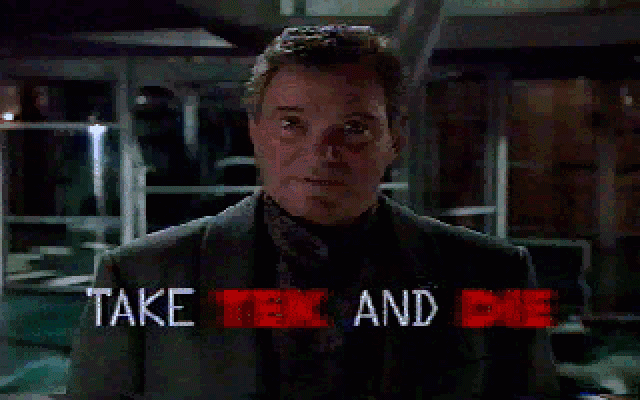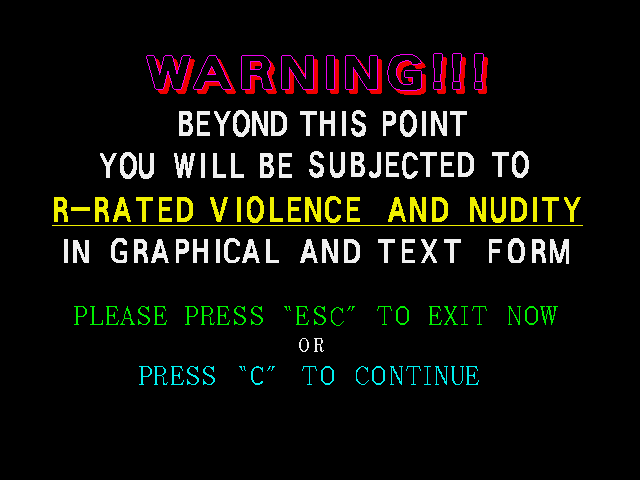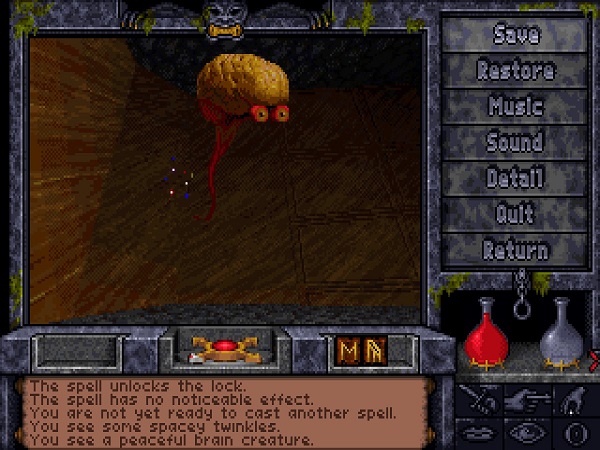  But movies about videogames are also part of another tradition: they're works of art in which the characters engage with works of art, either prefab or invented for the purpose. I feel like this art within art has a tendency to be stylised, to be exaggerated into something that could still be visible AS art within the framing structure. Twin Peaks is a soap opera that contains another soap opera, but the in-universe version has markedly worse acting, dialogue, sets, plotting etc than the TV show we're looking at. When characters in the movies go to the movies, they usually watch something in black and white; I'm sure this is in part for usage rights reasons, but it also makes it easier to parse between the two frames. There's something distinctly uncanny about digital tv shows where the characters are looking at screens which have exactly the same level of clarity and texture as the one we're watching. To exaggerate art in this way you need to decide what it is you're exaggerating: art as a material, or art as a dream? Older, "obsolete" or devalued formats tend to be presented as the former, merely objects in the world. The movies within movies don't really get to speak to us, or see us - at best they're strangely touching in their sealed-off muteness, or their accidental clumsy mirrorings of the framing narrative. But "new media" tends to be presented as the opposite - as completely immaterial, pure dream. Unbounded by physical limitation we can fly through infinite space, walk through walls, evade death, etc. The slight creepiness of these abilities is part of the appeal and we are of course primed for the narrative to eventually present their gruesome cost. The virtual realities of new media are typically presented as parasitic in some way, vampire realities drawing off the lifeblood of the present. It's maybe worth pointing out that this framing tends to act as a form of self-justification for the work itself, presenting itself as the best possible compromise - as more self-aware than the raw material of older forms, more human and grounded than the digital dream of newer ones, the ultimate synthesis. Of course, whatever their attitude toward the protean digital sludge they portray, these movies also typically make sure to put a lot of it into the trailer.  The idea of videogames as being more weirdly, aggressively quotidian than anyone might expect is a familiar one - think of all the cartoons where people are shown casually playing Super Trolley 2 or similar in the background (when obviously the original Super Trolley is the far superior title). And the idea that multiplying subrealities would get more material rather than less is a recurring Gnostic theme in Philip K Dick: if our world is a corrupt material subcreation of some demiurge figure, you might expect further subcreations to be even more material, further from the light - corpse worlds and black iron prisons. When reality disintegrates in Ubik it gets obtrusively, upsettingly material. Rather than simply fading away, objects become more object-like, they retreat from the domain of human utility and exchange value and into an unsettling thing-ness as they age, decay, are replaced by obsolete models. In eXistenZ a similar loss of "value" occurs, but what's more important here is the direction in which it travels: the idea of a hierarchial layering of realities, with energy being drained from the bottom to the top, is used in part as a means to burlesque other hierarchies of value and production. I give some examples below which contain SPOILERS so abandon hope ye who enter here:  Space: What country does the eXistenZ game take place in? The movie's real world is a curated event space; the first layer of game world is a decrepit but nevertheless reassuringly familiar noir-ish American nowheresville, semi-abandoned but still with a sense of place. By the time we hit the game within a game that ability to place ourselves is hindered - we're in a spatially unintelligible tangle of indistinct malls, factories, offices and polluted swamps. The characters are suddenly conspicuously ethnicised (Russian, Chinese), gesturing towards a general sense of the disavowed and outsourced spaces of globalization. Aesthetic: If as mentioned above the game's first level of reality is a noir, the second level - the game within a game - is more like a direct to video Steven Seagal movie. We can no longer keep track of what's happening or why, the factions change unintelligibly, characters are double-crossed or triple-crossed, everyone speaks with some kind of exaggerated accent as we're left floundering between arbitrary scenes of murder and sabotage. But if the game within a game is the less prestigious type of pulp, the movie's real world is the most prestigious kind: plausibly nonspecific, sci-fi parts removed (throbbing flesh gamepods replaced by sleek plasticky things), with a wraps-it-all-up twist ending of the Christopher Nolan variety. All connection to pulp chaos has been respectably reframed; presumably if we kept ascending through dimensions we'd end up in a John Cheever story. Humanity: The characters of the game-within-a-game are barely distinguishable from machines. They repeat canned dialogue and repetitive gestures, seemingly without volition, and in fact it's only at the very end of the movie that we discover these were humans at all and not merely game constructs. In an early essay Mark Fisher compares this NPCification to the kind of enforced script-reading demanded of call centre staff, trained to mimic repetitive machine tics. At this level of the film's reality the character's sense of their own responses are murky and confused - they're constantly wondering why they just did something, or why they want to do it. In a higher level of game-reality, the characters are more consistently 'human' but still quite shadowy. We're still a little in the dark about their real thoughts or motivations, while their relations with each other are charged with ambivalence. In one of the movie's last jokes, in the apparent real world, this previously consistent tone of emotional uncertainty is completely discarded with. The characters wake up from their noir dream and start warmly chatting to and complimenting one another; they speak in relaxed casual voices rather than elaborate artificial accents; even Willem Dafoe stops acting like a creepy weirdo! The vibe is sort of like those morning chat shows where celebrities and occasionally war criminals compete to show how nice and normal they are, how different they are from their careers and all the roles we see them play. If the characters at the deepest level of game reality have no degree of plausible deniability between their inner and outer lives, what they do and what they are, the characters on this plane can afford to remain as distant from their own past actions as from an unhappy dream.  Like a black and white melodrama glimpsed in the background of a modern movie, the appearance of these older and degraded forms only testifies further to the eventual and inevitable triumph of the new form that contains them. The realness of realism is in part achieved by absorbing and reproducing historical styles, whose presented artificiality makes the framing style read as less so by comparison. In a sense this takes us back to the basic recurring image of the "videogame movie" - that of the parasite reality which drains sustenance from the material world beneath it. Here realism itself is the preeminent existing form of VR - the videogames eXistenZ and transCendenZ are crude and revealing imitations, whose own failures and insufficiencies accidentally allow for the surfacing of those levels of material reality which realism attempts to transfigure and mystify. Worth noting as well is that most of the movie's acts of violence come from the realist faction, self-appointed policemen vainly trying to patrol the border around consensus reality in ways which are themselves mirrored and replicated as defense mechanisms for the "magic circle" of the game worlds themselves. As above, so below. 4. Well, this is probably an argument about art itself, rather than about videogames. But of course part of the fun of "videogame movies" as a form is getting to pretend for a second that these things really are NEW media, that they hold out the possibility of something truly unexpected, or at the very least that they represent a final dreadful step down a dangerous path from which there's no return and that soon we'll be forever doomed to languish in a grimy arcade den hunting for tokens so we can get our next hit of ultra-addictive videogames such as "Mr Do's Castle" and "Myst II: Riven". So in the spirit of the thing, we could say that if the game assigns any kind of special value to videogames themselves, it's the idea that the more absurdly mediated, janky and artificial a form is the more reflective it might be of the real levels of alienation on which real life depends. And the truer it is to the multiple layers of strange and inchoate sensation that the construction of real life obscures. Let the concept cheer us as we continue toiling in the frog factory :o)  Back to index |